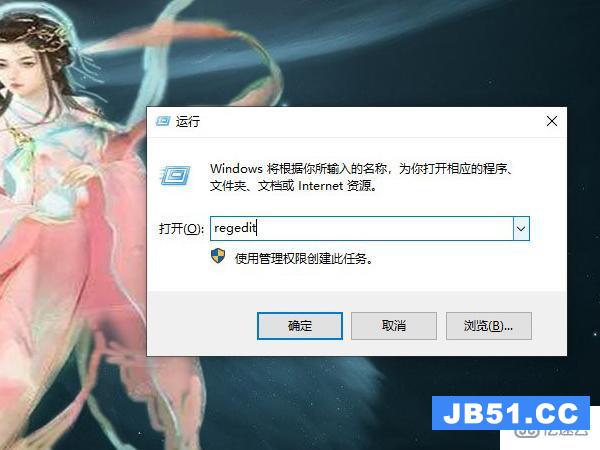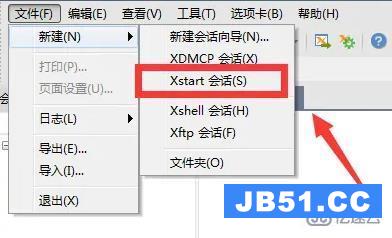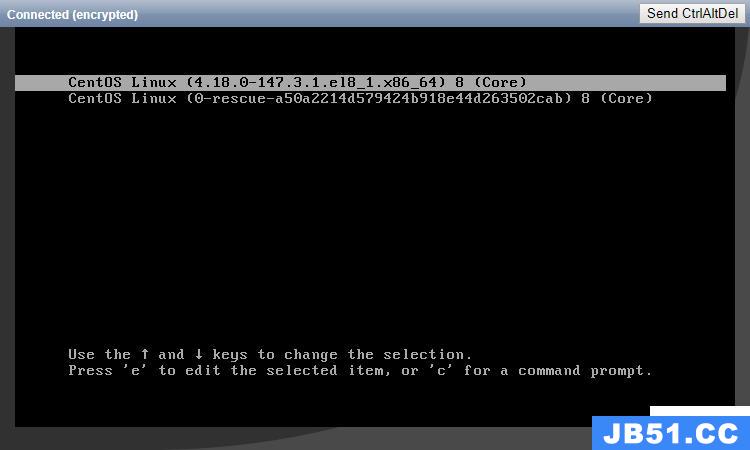一、背景
最近多家云盘相继关停,费了很多时间才把上面的东西下载到本地,百度云盘也早已开始限速,技术宅岂能容忍?是时候搭建自己的私有云盘了!
1、搭建自己的私有云有什么好处呢?
首先没有什么容量、下载速度的限制,而且本地访问速度很快。然后可以和本地的ftp配合使用来实现多个设备文件共享:比如可以在电视、手机等等智能设备上挂载云盘中的文件来实现播放电影、看照片、听歌等需求。最后可以防止泄密和和谐。
说到私有云,其实有很多现成的产品可以使用,比如群晖、铁威马、西数等。买过来,插上一块硬盘就可以用,十分适合小白。但是成本略高,仅仅主机就需要1000多元,再加上一块硬盘,这种解决方案的成本一般都要超过2000元。自己搭建私有云的话,不仅成本很低,而且可以自己定制很多功能,比如在线笔记、邮件等等功能。但是需要会折腾linux哦!
2、搭建难度怎么样?
自己搭建私有云其实很简单,首先需要一台主机,然后需要选择一个私有云软件(比如ownCloud、Nextcloud、seafile)。在这里我还是用我的Linux服务器作为主机,大概上传下载为2MB/s,在对比几个不同的私有云软件之后,最终采用了Nextcloud 12,感觉这个功能更为强大。
二、Nextcloud 12概述
Nextcloud 是一款自由(开源)的类DropBox软件,由ownCloud分支演化形成。它使用PHP和JavaScript编写,支持多种数据库系统,比如 MySQL/MariaDB、Postgresql、Oracle 数据库和 sqlite。它可以使你的桌面系统和云服务器中的文件保持同步,Nextcloud 为 Windows、Linux、Mac、安卓以及苹果手机都提供了客户端支持。Nextcloud 并非只是 DropBox 的克隆,它还提供了很多附加特性,如日历、联系人、计划任务以及流媒体 Ampache。
在这篇文章中,我将向你展示如何在CentOS 7.3服务器中安装和配置最新版本的 Nextcloud 12。我会通过Nginx和PHP7-FPM来运行Nextcloud,同时使用MariaDB做为数据库系统。
1、系统需求
官方推荐参数如下:
| 内存 | 最少512MB |
| 系统 | Red Hat Enterprise Linux 7 / Ubuntu 16.04 LTS |
| 数据库 |
MysqL/MariaDB |
| PHP版本 | PHP 7.0 + |
| WEB服务器 | Apache 2.4 with mod_PHP |
2、安装需要最低版本及支持平台
Server: Linux (Debian 7, SUSE Linux Enterprise Server 11 SP3 & 12, Red Hat Enterprise Linux/CentOS 6.5 and 7 (7 is 64-bit only), Ubuntu 14.04 LTS, 16.04 LTS)
Databases: MysqL/MariaDB 5.5+; Postgresql; Oracle 11g (currently only possible if you contact us <https://nextcloud.com/enterprise> as part of a subscription)
Hypervisors: Hyper-V, VMware ESX, Xen, KVM
Desktop: Windows XP SP3 (EoL Q2 2015), Windows 7+, Mac OS X 10.7+ (64-bit only), Linux (CentOS 6.5, 7 (7 is 64-bit only), Ubuntu 12.04 LTS, 14.04 LTS, 14.10, Fedora 20, 21, openSUSE 12.3, 13, Debian 7 & 8).
Mobile apps: iOS 7+, Android 4+
Web browser: IE11+, Microsoft Edge, Firefox 14+, Chrome 18+, Safari 7+
三、Nextcloud 12环境准备
首先安装epel和webtatic最新包仓库,具体参照我的置顶博文。
#安装Nginx yum install Nginx -y #安装PHP7及其nextcloud需要的包 yum -y install PHP70w-fpm PHP70w-cli PHP70w-opcache PHP70w-gd PHP70w-mcrypt PHP70w-MysqL PHP70w-pear PHP70w-xml PHP70w-mbstring PHP70w-pdo PHP70w-json PHP70w-pecl-apcu PHP70w-pecl-apcu-devel
2、验证安装的PHP版本
[root@pan ~]# PHP -v PHP 7.0.20 (cli) (built: Jun 10 2017 06:34:07) ( NTS ) copyright (c) 1997-2017 The PHP Group Zend Engine v3.0.0, copyright (c) 1998-2017 Zend Technologies
3、配置 PHP7-FPM
在这一个步骤中,我们将配置PHP-fpm与Nginx协同运行。PHP7-fpm将使用Nginx用户来运行,并监听9000端口。
#vim /etc/PHP-fpm.d/www.conf user = Nginx group = Nginx #在第8行和第10行,user和group赋值为Nginx。 listen = 127.0.0.1:9000 #在第 22 行,确保 PHP-fpm 运行在指定端口。 env[HOSTNAME] = $HOSTNAME env[PATH] = /usr/local/bin:/usr/bin:/bin env[TMP] = /tmp env[TMPDIR] = /tmp env[TEMP] = /tmp #取消第366-370行的注释,启用PHP-fpm的系统环境变量。
下一步,就是在/var/lib/目录下创建一个新的文件夹session,并将其拥有者变更为Nginx用户。
mkdir -p /var/lib/PHP/session chown Nginx:Nginx -R /var/lib/PHP/session/
然后启动PHP-fpm和Nginx,并且将它们设置为随开机启动的服务。
systemctl start PHP-fpm systemctl start Nginx systemctl enable PHP-fpm systemctl enable Nginx

4、安装和配置MariaDB
我这里使用MariaDB作为Nextcloud的数据库。可以直接使用yum命令从CentOS默认远程仓库中安装 mariadb-server包。
yum -y install mariadb mariadb-server
[MysqLd] innodb_file_per_table=1 default-storage-engine = INNODB
启动MariaDB,并将其添加到随系统启动的服务中去。
systemctl start mariadb systemctl enable mariadb
现在开始配置MariaDB的root用户密码,键入Y,然后设置MariaDB的root密码。
MysqL_secure_installation
这样就设置好了密码,现在登录到 MysqL shell并为Nextcloud创建一个新的数据库和用户。这里我创建名为nextcloud的数据库以及名为nextcloud的用户,用户密码为nextcloud。当然了,要给你自己的系统选用一个更安全的密码。
MysqL -u root -p
输入MariaDB的root密码,即可登录 MysqL shell。
MysqL> create database nextcloud CHaraCTER SET utf8mb4 COLLATE utf8mb4_general_ci; MysqL> grant all privileges on nextcloud.* to nextcloud@localhost identified by 'nextcloud'; MysqL> flush privileges;
我会让客户端以https连接来运行Nextcloud,这里我使用OpenSSL来创建自己的自签名SSL证书。
mkdir -p /etc/Nginx/cert/
openssl req -new -x509 -days 365 -nodes -out /etc/Nginx/cert/nextcloud.crt -keyout /etc/Nginx/cert/nextcloud.key
最后使用 chmod 命令将所有证书文件的权限设置为 600。
chmod 700 /etc/Nginx/cert chmod 600 /etc/Nginx/cert/*
四、Nextcloud 12安装配置
1、下载和安装Nextcloud
我直接使用wget命令下载Nextcloud到服务器上。
wget https://download.nextcloud.com/server/releases/nextcloud-12.0.0.zip
解压Nextcloud,并将其移动到/usr/share/Nginx/html/目录。
unzip nextcloud-12.0.0.zip mv nextcloud/ /usr/share/Nginx/html/
下一步,转到Nginx的web根目录为Nextcloud创建一个data文件夹,推荐选择一个比较大的分区放置data目录,因为以后上传的数据都会放置在里面。
cd /usr/share/Nginx/html/ mkdir -p nextcloud/data/
chown Nginx:Nginx -R nextcloud/
2、在Nginx中为Nextcloud配置虚拟主机
我们已经下载好了Nextcloud源码,并配置好了让它运行于Nginx服务器中,但我们还需要为它配置一个虚拟主机。在Nginx的conf.d目录下创建一个新的虚拟主机配置文件nextcloud.conf。
vim /etc/Nginx/conf.d/nextcloud.conf
upstream PHP-handler { server 127.0.0.1:9000; #server unix:/var/run/PHP5-fpm.sock; } server { listen 80; server_name pan.wzlinux.com; # enforce https return 301 https://$server_name$request_uri; } server { listen 443 ssl http2; server_name pan.wzlinux.com; ssl_certificate /etc/Nginx/cert/nextcloud.crt; ssl_certificate_key /etc/Nginx/cert/nextcloud.key; # Add headers to serve security related headers # Before enabling Strict-Transport-Security headers please read into this # topic first. add_header Strict-Transport-Security "max-age=15768000; includeSubDomains; preload;"; # # WARNING: Only add the preload option once you read about # the consequences in https://hstspreload.org/. This option # will add the domain to a hardcoded list that is shipped # in all major browsers and getting removed from this list # Could take several months. add_header X-Content-Type-Options nosniff; add_header X-XSS-Protection "1; mode=block"; add_header X-Robots-Tag none; add_header X-Download-Options noopen; add_header X-Permitted-Cross-Domain-Policies none; # Path to the root of your installation root /usr/share/Nginx/html/nextcloud/; location = /robots.txt { allow all; log_not_found off; access_log off; } # The following 2 rules are only needed for the user_webfinger app. # Uncomment it if you're planning to use this app. #rewrite ^/.well-kNown/host-Meta /public.PHP?service=host-Meta last; #rewrite ^/.well-kNown/host-Meta.json /public.PHP?service=host-Meta-json # last; location = /.well-kNown/carddav { return 301 $scheme://$host/remote.PHP/dav; } location = /.well-kNown/caldav { return 301 $scheme://$host/remote.PHP/dav; } # set max upload size client_max_body_size 512M; fastcgi_buffers 64 4K; # Enable gzip but do not remove ETag headers gzip on; gzip_vary on; gzip_comp_level 4; gzip_min_length 256; gzip_proxied expired no-cache no-store private no_last_modified no_etag auth; gzip_types application/atom+xml application/javascript application/json application/ld+json application/manifest+json application/RSS+xml application/vnd.geo+json application/vnd.ms-fontobject application/x-font-ttf application/x-web -app-manifest+json application/xhtml+xml application/xml font/opentype image/bmp image/svg+xml image/x-icon text/cache-manifest text/css text/plain text/vcard text/vnd.rim.location.xloc text/vtt text/x-component text/x-cross-domain-polic y; # Uncomment if your server is build with the ngx_pagespeed module # This module is currently not supported. #pagespeed off; location / { rewrite ^ /index.PHP$uri; } location ~ ^/(?:build|tests|config|lib|3rdparty|templates|data)/ { deny all; } location ~ ^/(?:\.|autotest|occ|issue|indie|db_|console) { deny all; } location ~ ^/(?:index|remote|public|cron|core/ajax/update|status|ocs/v[12]|updater/.+|ocs-provider/.+)\.PHP(?:$|/) { fastcgi_split_path_info ^(.+\.PHP)(/.*)$; include fastcgi_params; fastcgi_param SCRIPT_FILENAME $document_root$fastcgi_script_name; fastcgi_param PATH_INFO $fastcgi_path_info; fastcgi_param HTTPS on; #Avoid sending the security headers twice fastcgi_param modHeadersAvailable true; fastcgi_param front_controller_active true; fastcgi_pass PHP-handler; fastcgi_intercept_errors on; fastcgi_request_buffering off; } location ~ ^/(?:updater|ocs-provider)(?:$|/) { try_files $uri/ =404; index index.PHP; } # Adding the cache control header for js and css files # Make sure it is BELOW the PHP block location ~ \.(?:css|js|woff|svg|gif)$ { try_files $uri /index.PHP$uri$is_args$args; add_header Cache-Control "public, max-age=15778463"; # Add headers to serve security related headers (It is intended to # have those duplicated to the ones above) # Before enabling Strict-Transport-Security headers please read into # this topic first. add_header Strict-Transport-Security "max-age=15768000; includeSubDomains; preload;"; # # WARNING: Only add the preload option once you read about # the consequences in https://hstspreload.org/. This option # will add the domain to a hardcoded list that is shipped # in all major browsers and getting removed from this list # Could take several months. add_header X-Content-Type-Options nosniff; add_header X-XSS-Protection "1; mode=block"; add_header X-Robots-Tag none; add_header X-Download-Options noopen; add_header X-Permitted-Cross-Domain-Policies none; # Optional: Don't log access to assets access_log off; } location ~ \.(?:png|html|ttf|ico|jpg|jpeg)$ { try_files $uri /index.PHP$uri$is_args$args; # Optional: Don't log access to other assets access_log off; } }
下面测试一下该Nginx配置文件是否有错误,没有的话就可以重启服务了。
# Nginx -t Nginx: the configuration file /etc/Nginx/Nginx.conf Syntax is ok Nginx: configuration file /etc/Nginx/Nginx.conf test is successful # systemctl restart Nginx.service
3、Nextcloud安装
打开你的Web浏览器,输入你为Nextcloud设置的域名,我这里设置为pan.wzlinux.com,然后会重定向到安全性更好的https连接。
设置你的管理员用户名和密码,然后输入数据验证信息,点击 '完成安装(Finish Setup)'。

参考文档:https://docs.nextcloud.com/server/12/admin_manual/installation/index.html






